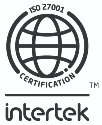It’s what’s upfront that counts

By Tim Hardcastle, CEO and Co-Founder, INSTANDA
The growth challenge
Insurance CEO’s are charged by shareholders, their executive committees and boards to find growth opportunities in increasingly challenging and often shrinking markets.
Accessing new markets, developing new products and keeping costs static are top of the wish list for most leaders I speak to, and they know that new ideas and revenue streams can be difficult to find.
InsurTech offers some hope but the smartest thinking is that the greatest opportunities exist when InsurTech and Insurance Start Ups combine with established insurance organisations and ambitious MGAs to find new ways of working.
The cost versus benefit conundrum
Having been the CIO of a much-respected insurance organisation, I know first-hand the complexities involved in trying to build and launch new products. Forward thinking underwriters and marketers can think up bottom-line impacting products at a rate of knots, but if it takes 6 months and a £500,000 investment to take one to market, then you have to have an iron clad business case in order to progress one of them; many promising opportunities will fall by the wayside.
One of the biggest issues is breaking the status quo when it comes to delivering products. In the old world, organisations considered simplification and amalgamation of platforms into a single provider as ideal; surely it is easier to launch products to market when there is only one system to concern themselves with? However, this is not the case, not only does a single platform typically create a bottle neck where demand far outweighs supply, but the journey to get there is also high risk and high cost. Rarely does everything else get switched off. Even if that is achieved, any inevitable weaknesses (because EVERY platform has weaknesses) are then amplified.
One size doesn’t fit all
In times when insurance buyers expect instantaneous delivery, outstanding customer experience and products which adapt when their needs change, we cannot realistically expect a single tool or platform to deliver every single aspect of this functionality. Often platforms focus on their back-office functionality as core, and strength in this area is important; however, the real value for insurance companies sit at the customer interface. Insurance buyers, whether commercial, consumer or intermediary don’t care how well your platform feeds your accounting or underwriting systems – that is the concern of your IT and operations teams. Of course, you need cohesion; a single view of the customer and integration with your back office to ensure you can run your business. But, this shouldn’t be the only driver for what you use to take your portfolio to market. The truth is, no single platform, technology or tool will do everything you want it too – no matter what the technology people may tell you. As with most other things in your life, the greatest solution to complex requirements is to create an ecosystem of solutions that can co-exist to deliver appropriately. I appreciate that ‘appropriate’ delivery is not the most dynamic of terms – so let me expand – because the concept is somewhat more exciting.
Scenario 1
Challenge: You want to offer a partner or intermediary flexibility to adjust ratings within agreed parameters, on a trial basis.
Requirement: You need a platform where you can build products and functionality quickly without upfront investment or negative impact on the delivery of the current IT roadmap.
In this situation, back office integration is still important but could be built out over time, once the functionality is tested and validated as a long-term requirement.
Scenario 2
Challenge: You want to migrate an entire book of business following an acquisition, you need it up and running for the first renewal and every day you don’t have a solution you have to pay temporary staff to process it manually which is a poorer experience for your customers; increasing churn and reducing the profitability of the book.
Scenario 3
Challenge: A change in UK legislation creates an opportunity to sell a new kind of insurance product. Your underwriters have comparable underwriting information and believe they can price it using an existing rating and adapting an existing wording to the new requirements. A cost versus benefit of the opportunity will take several weeks and if it validates the opportunity you will then have to find additional budget to create an end-to-end solution for managing the acquisition of customers, quote, bind, issuing documents, MTAs, claims and accounting. Your marketing department have no experience targeting this kind of business – so the opportunity passes because a competitor launches a website selling cover while your team are still working out an approach
In very few other areas of business or life would you allow the technology tool to determine what task you can take on, but all too often the ‘computer says no’ mentally of single large IT systems means that the entrepreneurial spirit erodes over time. Instead of innovation, diversification and growth, we are happy to settle for roughly on-time, hopefully on budget and usable with workaround processes.
But the good news is that some organisations are awake to this fact and a number of dynamic businesses are combining their legacy and conglomerate-provided engine rooms with more agile, flexible tools. In the scenarios above these ‘front end’ focused platforms combined with sophisticated underwriting allow you to address the challenges by creating sites and functionality that delivers and sits outside of the archaic ‘change request’ process, where IT roadmaps are locked down months in advance, limiting any opportunistic ventures.
Building an environment which offers low cost, no-code functionality which can drag and drop an API connection as easily as a mail merge, , gives your organisation real choice.
Leaders and growth champions will have tangible ways to access new markets, as well as new products to tap into current markets.
Ultimately the real barriers to innovation are not modern cloud native systems or a lack of ideas, innovation is most often restricted by people and their inability to understand there is a different way. A ‘putting the customer first’ philosophy certainly doesn’t start in the back office.
To see how INSTANDA can support your organisation, book a demo with our sales team





